Are you wishing to cycle your fish tank in only 24 hours? Cycling a fish tank may be a time-consuming procedure. It takes 4-6 weeks to complete this task.
Do not worry instant cycle method is here. With a little understanding of the fish tank cycle and the nitrogen cycle, you can instantly cycle through your fish tank cycle in only 24 hours.
In this article, we will look at various techniques for cycling your fish tank in 24 hours. It helps you decide if it is the best option for you or not. So, are you ready to discover how to cycle a tank in 24 hours? Let’s get started!
Table of Contents
Fish excrete nitrogen-based waste through their gills by excreting ammonia. Unlike mammals, fish used to swim in the same area. They expel ammonia source from their wastes.
Fish are protected from low amounts of ammonia by a mucus coating formed by their skin. When exposed to high levels of ammonia, they can lose their protective mucus covering. They get ill or even die. In a closed container, chances become high.
What is the nitrogen cycle in aquariums?
As we discussed fish excrete ammonia. The nitrogen cycle is the biological cycle of turning poisonous ammonia into nitrites and nitrates. They are then utilized by plants for growth naturally.
What is cycling an aquarium?
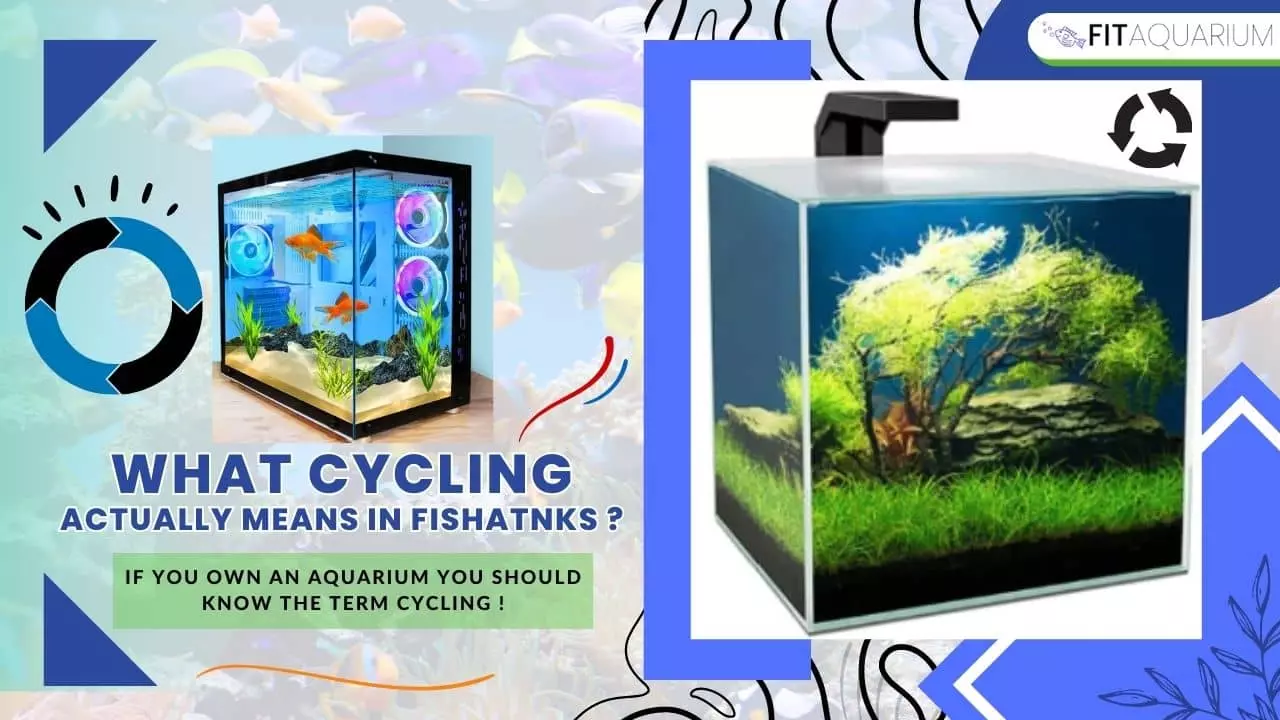
A newly created or recently cleaned fish tank lacks sufficient beneficial microorganisms to break down toxic substances.
Fish tank cycling refers to the process of growing the number of beneficial bacteria in a freshly prepared fish tank to the desired level.
Importance of Nitrogen cycle in cycling aquarium
The nitrogen cycle is an important process. In a well cycled tank, it creates a stable and healthy environment for fish and other aquatic species. The nitrogen cycle involves the conversion of poisonous fish waste into less toxic compounds.

The cycle begins with fish waste. Fish waste produces ammonia. Ammonia is extremely poisonous to fish. It may rapidly accumulate in an aquarium if not properly controlled. Sufficient Beneficial bacteria are called Nitrosomonas. They convert ammonia into nitrite. It is less dangerous than ammonia.
You can provide a safe and healthy environment for the fish and other aquatic species by developing a healthy nitrogen cycle in a tank.
The nitrogen cycle contributes to stable and constant water chemistry. It is critical for your fish’s health and well-being.
How to cycle an aquarium as a beginner?
Follow the steps one by one to cycle a tank even as a beginner.
Step 1: Aquarium tank and water quality parameters
The first step in setting up a fish tank is to place it in a suitable area. It should be away from direct sunlight and high temperatures. You must change the water quality to ensure that it is suited for your fish by checking the pH level.
Aeration is also important for your fish’s health. It helps to oxygenate the water and maintain a healthy atmosphere. To accomplish appropriate aeration, you can use an air pump or other equipment.
Heating is necessary to keep a steady temperature in the tank. Heating is critical for the health of fish. Choose a heater that is suitable for the size of your tank.
Step 2: Rinse and Clean the Fish Tank
Clean the tank thoroughly with water before adding water or substrate, to eliminate any dirt or debris. After rinsing, wipe off the aquarium with a soft cloth or sponge. It removes impurities.
Any debris can degrade the water quality and harm the health of the fish. Prepare the tank, and check the water quality. Make sure the aeration and heating are working properly.
Step 3: Addition of suitable Substrate
Fill the new tank of the aquarium with a layer of substrate, such as gravel or sand. The substrate will give a surface for beneficial bacteria to grow. They contribute to the nitrogen cycle.
Note: Gravel is commonly used because it is simple to clean and maintain. It also serves as a foundation for any plants (like Java Moss) or decorations in the new fish tank itself.
Step 4: Filling water in the Aquarium
Fill the aquarium with water. Add a water conditioner to eliminate any potentially dangerous pollutants like chlorine and chloramines. This will assist in guaranteeing that your fish are safe.
Note: Tap water includes chlorine and other chemicals. And there is no doubt that chlorine is hazardous to fish.
It should always be used filtered tap water treated with a water conditioner before being added to the tank.
Step 5: Installation of Filter
Install and activate the filter. The filter will circulate the tank’s water. It gives a surface for healthy, beneficial bacteria growth to thrive on.
The filter is an important aspect of any aquarium. It eliminates trash and other particles from the water, keeping it clean and clear.
Step 6: Addition of Beneficial Bacteria
Start the nitrogen cycle by adding nitrifying bacteria to the water. To introduce the bacteria, you can use a commercial bacterial supplement. A small amount of substrate or filter media from an established aquarium can be used.
Beneficial bacteria assist in the breakdown of ammonia and nitrites in the water. They make water safe for fish.
Step 7: Monitoring of Water Parameters
Monitor water parameters such as ammonia, nitrite, nitrate, pH, and temperature using a test kit. These factors are critical for guaranteeing your fish’s health and safety.
These metrics should be monitored daily for the first few weeks or days. pH value between 6.5 and 7.5 is considered ideal.
Step 8: Do Partial Water Changes
If the ammonia levels grow, dilute it with a partial water change. This will help maintain your fish’s levels healthy and support the growth of beneficial microorganisms.
Every week, change roughly 25% of the water to ensure that the water remains clean and clear.
Step 9: Testing of Water Parameters Again
Test the water parameters again after 24 hours to determine whether any changes have occurred. If there are low ammonia and nitrite levels and higher nitrate levels, the tank is likely cycled and ready for fish.
However, the water parameters must be monitored over the following several days to ensure that they remain constant.
How to cycle a tank in 24 hours? Tips for Sooper Fast Cycling
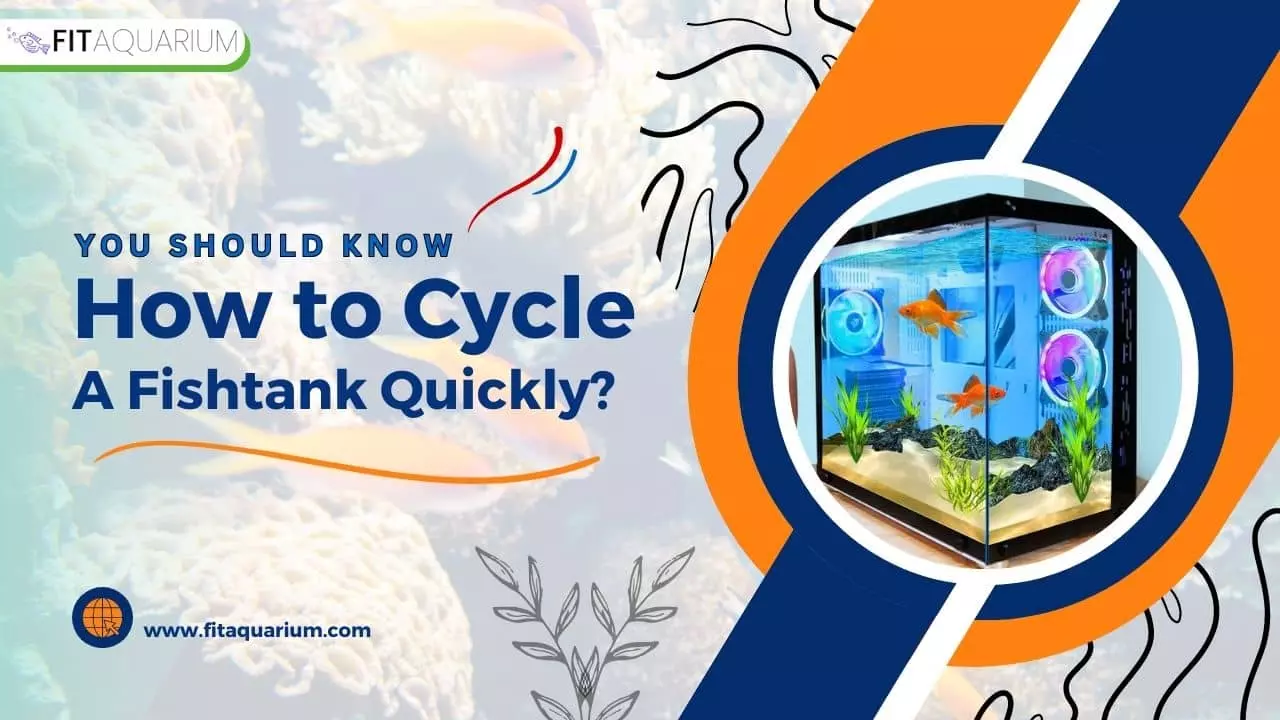
Here are some Tips to Cycle your tank in 24 Hours only. Follow these steps to catalyze the aquarium cycling process.
Warning: Do not follow any step without proper instructions and knowledge. Do not follow each step. Pick the one according to your need. Fish health should be your first priority.
Total Time: 24 hours
-
Use of Quick Start Products
Quick Start products contain live good bacteria. They assist in the quick start of the nitrogen cycle. These products grow helpful good bacteria in the tank. Beneficial bacteria start converting ammonia to nitrite and eventually to nitrate.
Precaution: For the right dosage, follow the directions on the product package. Over dosage of quick-start products can be very harmful to the fish and other organisms present in the aquarium
-
Seeding of tank
The nitrogen cycle can be accelerated by seeding the tank with established filter media. You may either use filter material from an existing tank or buy commercially available bacterial additions.
Precaution: Take caution while handling the filter media. Avoid washing it with tap water. Tap water might destroy the beneficial bacteria in the sponge filter. -
add Fish Slowly
Slowly adding fish to the established tank, can help to maintain the nitrogen cycle. Less number of fish in an established tank can generate enough ammonia. It sustains the nitrogen cycle and feeds the beneficial bacteria.
Precaution: Avoid adding too many fish at once. It might overburden fish tanks with beneficial bacterial growth and slow down the process.
Read Also: How to Add New Fish to Tank (in A RIGHT WAY) -
High Temperature and Aeration rate
Raising the temperature and aeration in the tank can assist in speeding up the nitrogen cycle. Warm, oxygenated conditions are ideal for beneficial microbes.
Precaution: Make sure not to overheat the water. It can be harmful to the fish.
Supply:
- Ammonia Source
- Dechlorinator (Optional)
Tools:
- Essential Tank Components (Fileteration system, Heater, Substrate and Decorations)
- Water Test Kit
How long to Cycle a Tank with QuickStart?
Quick Start Products are designed in such a way to accelerate the process of cycling a fish tank to some extent. Before starting the cycling, there must be well stable Nitrogen Cycle already established in the tank. Because the Nitrogen Cycle helps beneficial bacteria to grow and convert toxic ammonia into harmless nitrates.
This means, yes, Quick Start Products helps to boost the cycling process but to some extent. If used wisely it can limit your process to 24 Hours.
Using Old Tank Water to Cycle
As we all know, beneficial bacteria is the primary responsible for Nitrogen Cycle. The majority of beneficial bacteria are found on the surfaces within the aquarium like filter media, decorations, and even on the glass. While a little amount of this beneficial bacteria is also present in the tank water itself.
Now putting this old tank water in the new one to use it to boost the cycling process might help. This little amount of beneficial bacteria jumpstarts the tank cycling.
But for best results try to transfer your filter media too from the old tank into the new tank.
Do’s and don’ts: Cycling a fish tank in 24 hours for beginners
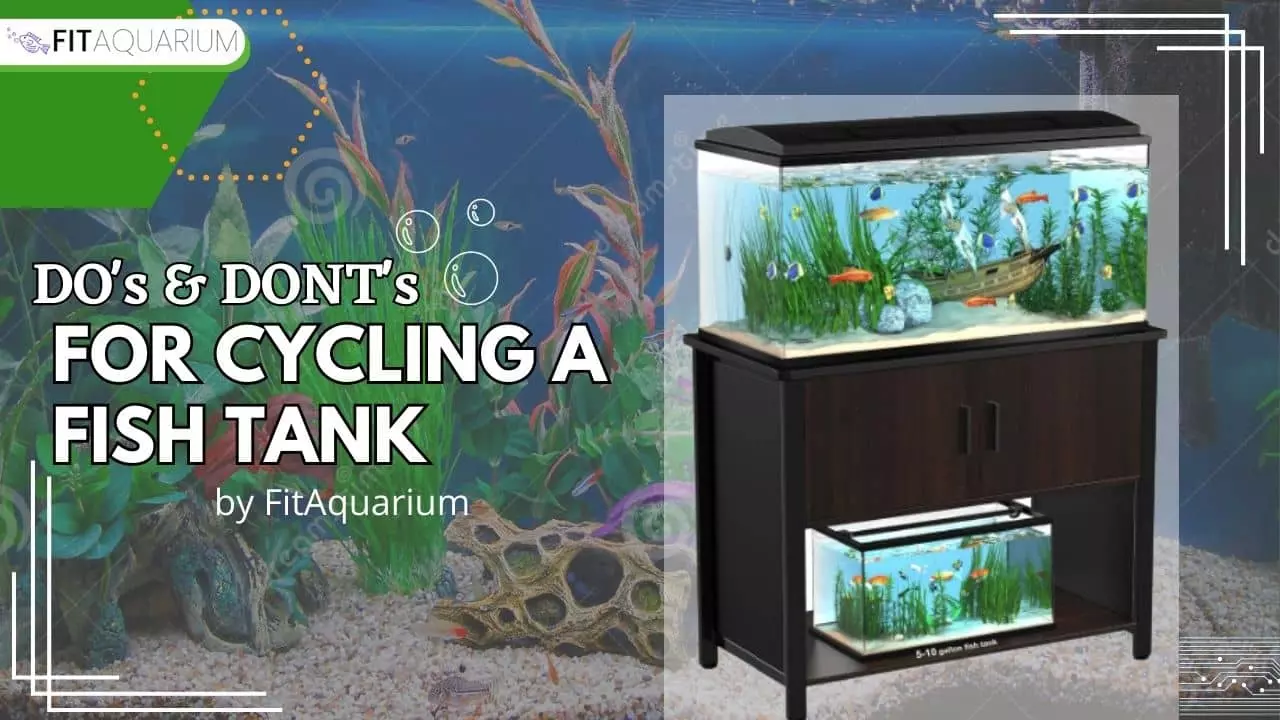
What should not do?
- Don’t put a large number of fish in a tank at once. This can create an increase in ammonia and nitrite levels, which can affect aquatic life.
- Throughout the cycling process, don’t change the water too frequently. This can disturb the nitrogen cycle and slow it down.
- Do not add any new fish or any organism to the aquarium until the cycle has finished. Wait for the stabilization of water conditions.
- Before and after touching aquarium equipment and introducing fish food or water, always wash your hands.
What should do?
- Always wash your hands before cycling the aquarium
- To protect your hands, wear gloves when required.
- Introduce no extraneous objects or substances into the aquarium. It might harm aquatic plants or disturb the nitrogen cycle in cycling tanks.
- Feed your fish with fish food in fewer amounts. This might lead to a rise in ammonia and nitrite levels in the water.
- Read the instructions on any additives carefully. Only use them as suggested.
- Make check that the water conditions in your aquarium are appropriate for the various fish species you keep in a fish tank.
- Make sure that that biofilter is sufficiently large.
- Make sure that the biofilter is not particularly clean. Too much cleaning of the biofilter will remove nitrifying bacteria.
Signs of cycled aquarium
Knowing whether or not your aquarium has been cycled is an important element of maintaining a healthy and stable aquatic habitat. These are some indicators that your aquarium’s nitrogen cycle has been completed.

1. Ammonia level is close to zero
Ammonia levels will rise during the cycle process before falling. It is because nitrifying bacteria convert it to nitrite. Ammonia levels should be continuously low or undetectable until the cycle is complete.
2. Nitrite level is close to zero
Ammonia and nitrite levels are important in determining water parameters. When ammonia levels fall, nitrite levels increase. Ammonia level fall as nitrifying healthy bacteria converts nitrite to nitrate. Nitrite levels should be consistently low or undetectable once the cycle is complete.
3. Nitrates should be present
Nitrate levels in the aquarium should be present once the cycle is complete. High amounts of nitrate can be toxic to fish. It is critical to monitor and regulate the levels through partial water changes.
4. pH stability
A steady pH level is required for a healthy aquarium environment. pH levels may fluctuate during the full, freshwater tank or fish tank cycling process. Once the tank cycling process is completed, pH levels should be stable and within the appropriate range for fish.
5. Active and healthy Fish
Once the cycle is complete, you may begin carefully and progressively adding more fish in cycle two. It is a good indicator that the fish are healthy and active, and show no symptoms of stress in a well-cycled tank or filter tank.
Bonus
Water parameters during and after cycling in an aquarium are very important to monitor. So here is a bonus for you. A water quality parameter worksheet is given here which helps you to note down water parameters efficiently. It can be downloaded by the download button.
Conclusion
In conclusion, the answer to how to cycle a tank in 24 Hours is not very difficult. In fact, it is an adventurous activity to do. It should be handled carefully, especially while adding fish. Always add fish slowly. Keep in mind to monitor the water parameters regularly. Do not forget to add nitrifying bacteria. Prevent overfeeding your fish with fish food. The rotting fish food starts the nitrogen cycle.
Remember that the fish keeping a healthy nitrogen cycle results in maintaining a healthy and beautiful cycled fish tank. Fish owners can enjoy an adorable aquarium environment for years to come if they have the right knowledge, patience, and careful handling skills. Therefore, take your time, follow the procedures, and have fun constructing a beautiful and healthy aquatic home for your fish.
Here is a video by Irene on Cycling an aquarium instantly
Frequently Asked Questions
Here are some Frequently Asked Questions about Cycling a tank in 24 Hours. But if you have any further queries, you can ask in the comments and I will be glad to help you with that.
-
Should you do water changes when cycling a tank?
Yes, you should perform partial water changes while cycling. Regular water changes assist in the removal of accumulated nitrates and other pollutants, resulting in a healthier environment for the growth of beneficial microorganisms. Avoid major water changes, which may disturb the cycle process.
-
Can you add plants to an uncycled tank?
Yes, live aquatic plants can be added to an uncycled tank. In fact, plant life can assist in improving water quality and create a more stable habitat for beneficial bacteria to develop during the cycle process by absorbing some of the ammonia and nitrates.
-
What is the Fastest Way to Cycle a Tank?
The fastest way to cycle a tank is through fishless cycling. Add a source of ammonia to the tank, reaching 2-4 ppm, without adding fish. Alternatively, seeding the new tank with established filter media or using commercial bacterial starter products may also boost the cycling process. Regular water parameter monitoring is critical during this process.
-
How do you tell if a tank is cycled?
Testing the water for ammonia, nitrite, and nitrate levels can help you determine if a tank has been cycled. Ammonia and nitrite levels should be nil in a thoroughly cycled tank, whereas nitrate levels will be present. Additionally, beneficial bacteria colonies are also established, guaranteeing that hazardous chemicals are broken down.

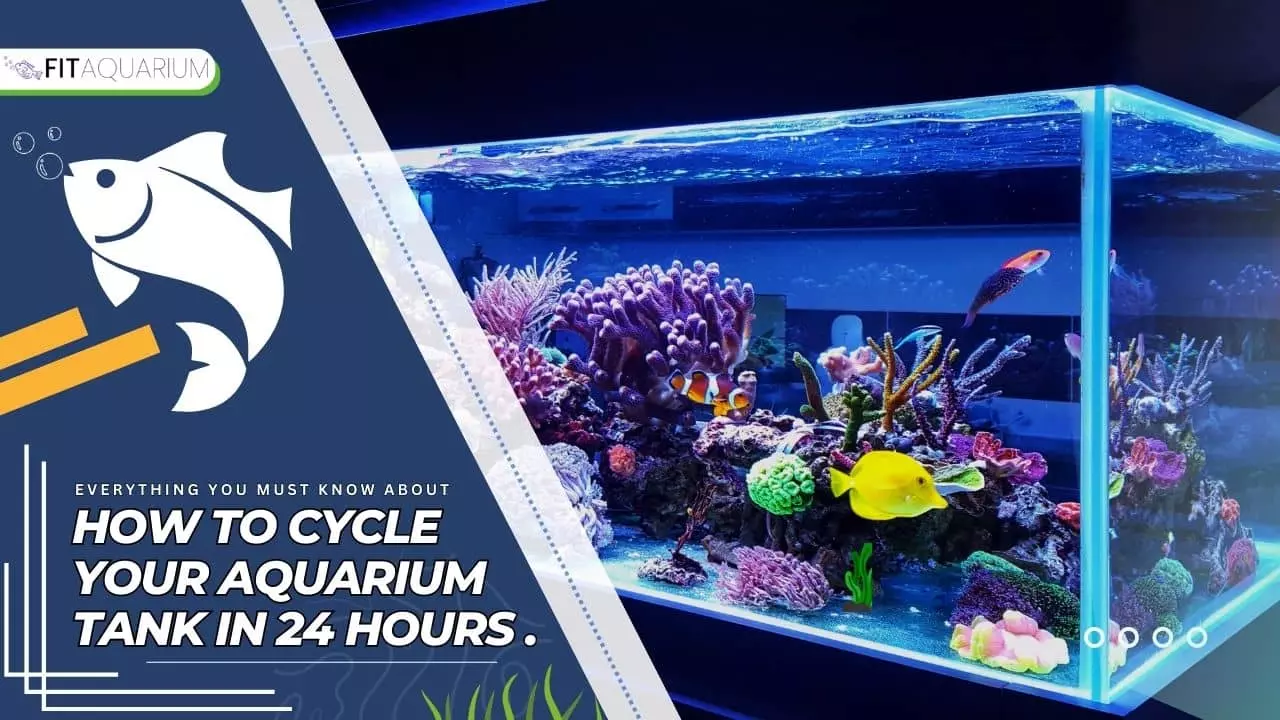
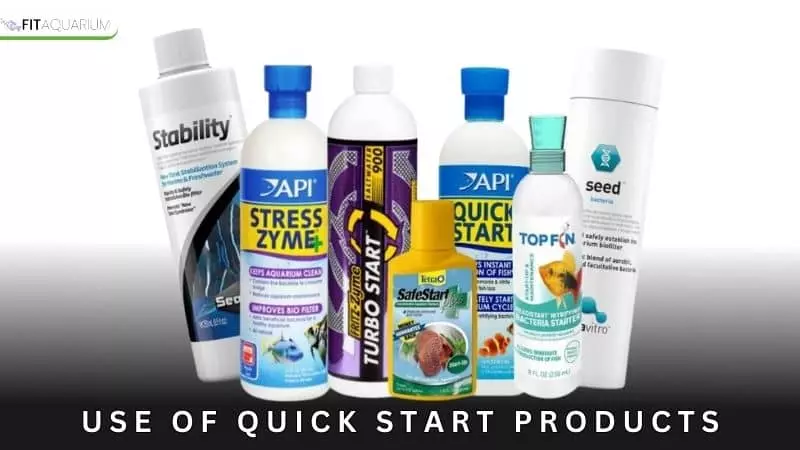
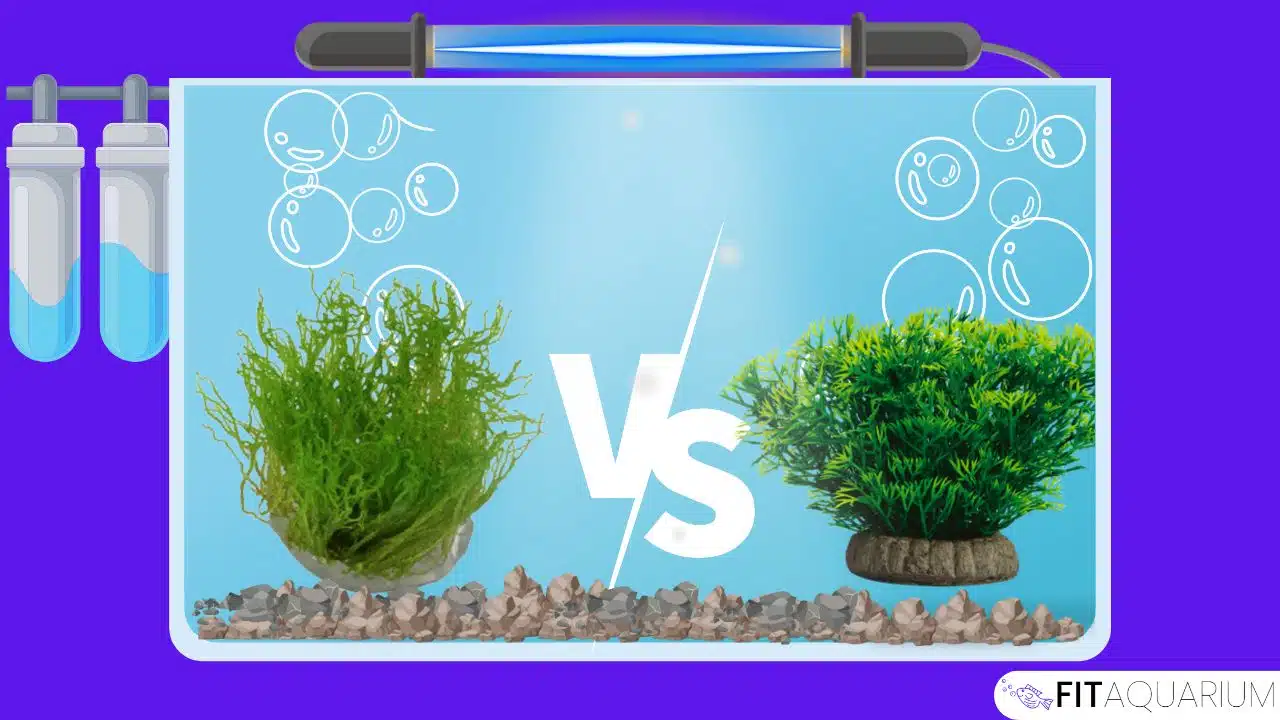


Hello very useful thank you
You are welcome buddy
Hello thank you very much
Pleasure is all mine
Very informative great
Thanks buddy,
Hope it’ll help you
Hello thank you very much
Pleasure is all mine mate,
Hope you have understood the whole process, if you still have any query or confusion, feel free to ask in comments section.